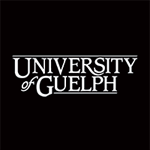Scotland’s attraction as a site of mass tourism may be credited to its alluring landscapes, the development of railways, rising disposable incomes, and other products of industrialization. There were also other important factors that preceded large-scale tourism.
The country long boasted a network of inns, critical for commerce, conviviality, and even local administration. Its roads grew in the first half of the eighteenth century, alongside the threat of Jacobites—a movement hostile to the Protestant monarchy. The pacification of the Highlands after the decisive defeat of the Jacobites in the middle of the eighteenth century was accompanied by a wave of interest that intensified with the supposed ‘discovery’ of ancient Celtic epic poetry. And soon after, by a Romantic movement that glorified landscapes found across the country, especially in Highland regions. War with France in the late eighteenth century, ending only in 1815, meant that British travellers embraced the Home Tour. Their numbers were small compared to those who would follow, and they deployed a vocabulary of landscape appraisal in performances of travel connoisseurship.
The Highlands occupy outsized space in the study of Scottish tourism history. The country’s great cities, and especially Edinburgh, the ‘Athens of the North’, had long attracted visitors. As the industries of the country grew, concentrated in its ‘Central Belt’, they attracted travellers, too. But for many the ‘Caledonian tour’ was above all a Highland affair. As tourism increased, spawning a range of businesses that catered to an expanding group of consumers, a tour of Scotland often involved travel north of the ‘Highland line’—though how far and for what length of time depended heavily on the resources of the tourist.
This exhibit reflects the extent to which Scottish tourism development was also fuelled by an information revolution—by the end of the nineteenth century, levels of literacy were far higher than at its beginning. It meant that guidebooks, tickets, maps, and other resources, from travelogues to postcards, became part of the apparatus of travel, and
that tourists could also recount their experiences in their own hand.
The University of Guelph’s Scottish Studies Collection, in the McLaughlin Library’s Archival and Special Collections, boasts an impressive and expanding set of travel-related material, examples of which are featured in this exhibit. We invite you to join with our student curatorial team in exploring the history of Scottish tourism, and some remarkable documents which bear witness to it.
Credits
Curators: Michael Albanese, Gerry Atkins, Joshua Dinis, Zoe Fink, Dr. Kevin James (supervisor), Michael Hoscheit, Connor Kosnaskie, Melissa McAfee (supervisor), Rachel Murray, Aidan Nault, Holly Reid, Owen Tsiptsis
